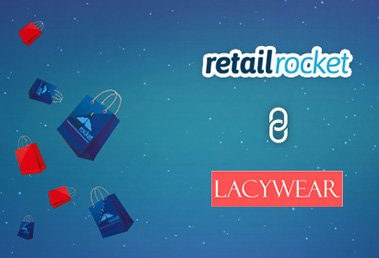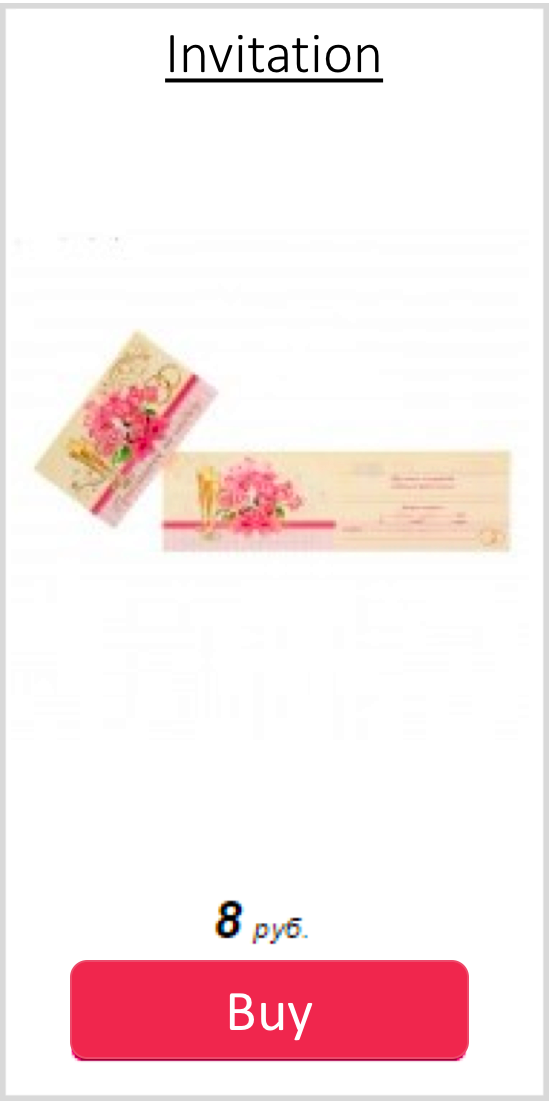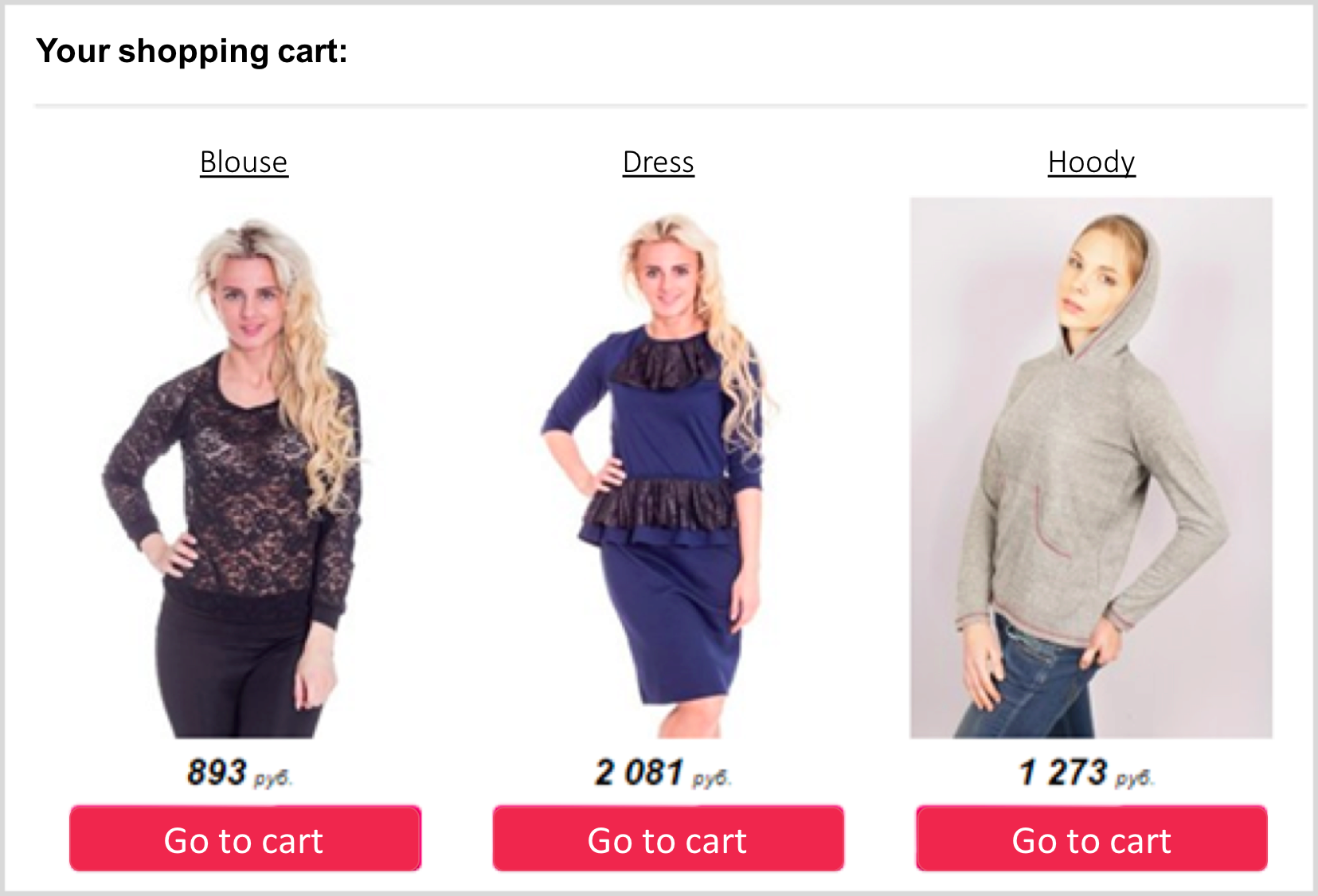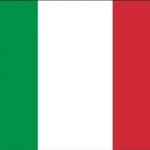LacyWear’s Trigger-Based Emails Growth Hacking

On a daily basis, Retail Rocket Growth Hacking team focuses on increasing revenue for online stores using A/B tests to improve the email marketing layouts of our customers. In today’s article, we will continue sharing our knowledge on iterative efficiency improvement of email marketing campaigns, using the online store LacyWear as an example, which is famous for its own clothing line, textiles and accessories.
You will recall that our previous case study was dedicated to boosting the efficiency of email marketing at Tehnosila online store. Today’s article on Growth Hacking email marketing shows how by successfully optimising LacyWear’s emails, Retail Rocket increased various KPIs.
The evaluations of the emails were conducted using A/B tests. All mailing recipients were randomly divided into two segments in real time. Segment A received the existing current email version; segment B received an email designed to test the alternative hypothesis. The goal of the test was to identify the statistically significant difference in the conversion rate between the visitor segments thus determining the most profitable version of the email template.
Optimizing “Abandoned Cart Recovery Email”
Resolving the unfinished order issue is quite an urgent matter for online stores since the average market level of abandoned carts stands at about 70% of all unfinished purchases. A reminder email about the “abandoned cart” is an efficient conversion method for users who didn’t finish their order for whatever reason.
Optimizing “Abandoned Cart Recovery Email”
Abandoned carts make up about 70% of all unfinished purchases, so solving the problem of “abandoned carts” is a priority for online stores. Sending a reminder email to the customer about their “abandoned cart” is an efficient conversion method for users who didn’t finish placing their order.
Case Study 1: Call-to-action Layout on Item Cards
Hypothesis
- Presenting a product in the shopping cart with a “Go to Cart” call-to-action makes it more likely that a visitor will complete a purchase than by using “Buy”.
Call-to-action layout in different segments:
 |
 |
| Segment А (“Buy”-button) | Segment B (with an alternative call-to-action element-“Go to cart”-button) |
Result
Hypothesis testing involved over 5,000 recipients and yielded the following results:
| Sent | Conversion (%) | |
| Group A | 2,646 | 13.4 |
| Group B | 2,687 | 17.7 |
| Δ | — | +32% |
An alternative call-to-action element in the “Abandoned Cart” email template led to a 32% increase of the conversion rate. The statistical significance of the test result was 96.5%
Case Study 2: Presentation of Item Cards as an order List
Hypothesis
- Presenting the products chosen by consumers in a horizontal layout in the shopping cart display increases the likelihood that they complete a purchase.
Presentation of the consumer’s selected products in different segments:
 |
 |
| Segment A (no change) | Segment B (with an alternative layout of item cards in the shopping cart display) |
Result
This hypothesis was tested with a participation of over 11,000 recipients and the following KPIs were obtained:
| Sent | CTR (%) | Conversion (%) | |
| Group A | 5,915 | 47.9 | 15.7 |
| Group B | 5,864 | 51.4 | 18.6 |
| Δ | — | +7.3% | +18.5% |
Implementation of alternative item cards led to 7.3% click-through-ratio growth and 18.5% conversion rate increase. The statistical significance of the test results was 98.3% and 95.2% respectively.
Case Study 3: Additional Information and Motivating Headers
Hypothesis
- Using links for the information about the delivery of the goods, payment methods and how to make an order make users more eager to visit the website and complete the order.
Text layout in different segments:
 |
 |
| Segment A (no change) | Segment B (Text with additional information) |
- Alternatively, adding these links for more information in the email footer instead, can also entice users to visit the website and finalize the order.
Email footer layout in different segments:
 |
 |
| Segment A (no change) | Segment B (available links to information sections in the email footer) |
- A call to get discounts and special prices in the header and additional text will stimulate the users to select a suitable item.
Header and recommendation section text layout in different segments:
 |
|
| Segment A (no change) | Segment B (Text with additional information) |
Result
Testing the comprehensive change impact hypothesis on key email mailing campaign indicators involved over 5,000 recipients and yielded the following results:
| Sent | Conversion (%) | |
| Group A | 3,049 | 12.2 |
| Group B | 2,910 | 16.5 |
| Δ | — | +35% |
The synergy of changes made to the “Abandoned Cart” email template led to the 35% increase of the conversion rate. The statistical significance of the test result was 97.5%.
Case Study 4: Motivation to Finalize an Order in the Introductory text
Hypothesis
- Using the introductory text to create the sense of urgency about missing a good deal can entice users to make a purchase decision. Red text attracts additional attention from the users.
Initiation text layout in different segments:
 |
 |
| Segment A (no change) | Segment B (alternative design of the Introductory text) |
Result
Hypothesis testing involved over 11,000 recipients and yielded the following results:
| Sent | Conversion (%) | |
| Group A | 5,686 | 13.6 |
| Group B | 5,971 | 16.4 |
| Δ | — | +20.6% |
Alternative Introductory text with a color accent in the “Abandoned Cart” template scenario allowed us to get a 20.6% increase of the conversion rate. The statistical significance of the test result was 96%.
Case 5: The Optimal Time for Sending Emails
Hypothesis
- Reducing the email launch delay before sending an “Abandoned Cart” email to 15 minutes has a positive impact on email opening. Other key indicators are not affected.
Email delay in different segments:
Original email delay (Segment A): 30 minutes
Alternative email delay (Segment B): 15 minutes
Result
Testing involved over 5,000 recipients and yielded the following results:
| Sent | Open Rate (%) | |
| Group A | 3,016 | 29.5 |
| Group B | 2,992 | 32.6 |
| Δ | — | +10.5% |
Reducing the email launch delay down to 15 minutes resulted in a 10.5% Open Rate increase, while all other key indicators remained at the same levels (Unsubscribe Rate, CTR, conversion and average order value), which is a mandatory condition for the success of such campaigns. The statistical significance of the test results was 99.4%.
Optimizing Emails with Abandoned Items View
When users do not perform any significant actions during a visit (e.g. adding a product to the cart, placing an order, etc), it is a good moment to initiate a personalized communication with them by sending emails with products viewed during the visit and custom recommendations of alternative products that have not been viewed yet. This email gathers products that were interesting to them, so that they do not have to look for them again.
Case Study 6: Item card, Header and Call-to-action Layout
Hypothesis
- Placing a text link with a product name above the image is an excellent call-to-action while underlining said link expresses an obvious possibility to click on it.
- The current “Place an Order” call-to-action generates a negative psychological barrier expressed as expectation of a “forced” order placement process. The alternative “Buy” call-to-action can neutralize such concern by raising confidence regarding the existing choice that can be controlled by the buyer.
External appearance of item cards in different segments:
 |
 |
| Original option | Alternative card option |
- Acknowledging the fact that items that were viewed earlier were not those that the user was looking for, can attract user’s attention to product recommendations in the email.
Recommendation block headers in different segments:
| “Our recommendations:” | “Not quite what you’re looking for? You might like:” |
| Segment A (no change) | Segment B (alternative header option) |
- Adding “Show More” as a text link to the product catalog is an additional source of qualified traffic to the website.
External appearance of a “Show More” call-to-action element in segment B:

Result
Comprehensive hypothesis testing involved over 40,000 recipients and showed the following outcomes:
| Sent | Conversion (%) | |
| Group A | 20,405 | 2.37 |
| Group B | 19,847 | 3.2 |
| Δ | — | +35% |
Implementation of comprehensive changes to the “Abandoned View” email template led to the 35% increase of the conversion rate. The statistical significance of the test result was 95.1%.
Case Study 7: Custom Email Greeting Text
Hypothesis
- Adding a greeting text with a list of product categories viewed by the visitor moves the user to return to their search for suitable items.
Introductory text in different segments:
 |
 |
| Segment A (no change) | Segment B (text with customized links) |
Result
Hypothesis testing involved over 56,000 recipients resulted in:
| Sent | Click-to-Open Rate (%) | Click-Through Rate (%) | |
| Group A | 28,063 | 66.9 | 29.7 |
| Group B | 28,399 | 74.9 | 31.8 |
| Δ | — | +11.9% | +7% |
Adding a customized greeting text to the “Abandoned View” email template led to 11.9% growth of the click-to-open-rate indicator and 7% growth of the click-through-rate indicator. The statistical significance of the test results was 100% and 99.8% respectively.
Case Study 8: Email Footer Layout
Hypothesis
- The increased number of special offers due to the reduced banner width and a new design solution for their current layout engages user experience gained during website interaction. Therefore, this will increase the extent of user’s attention captured in order to attract additional target traffic to the website.
- Call-to-action as a bright graphical button attracts user attention, which leads to increasing the number of “returned” site visitors who continue searching for suitable products.
Action block layout in different segments:
 |
 |
| Segment A (no change) | Segment B (alternative design of email footer) |
Result
Testing involved over 50,000 recipients and yielded the following results:
| Sent | Click-to-Open Rate (%) | Click-Through Rate (%) | |
| Group A | 25,502 | 60.9 | 27.7 |
| Group B | 25,226 | 64.6 | 30.1 |
| Δ | — | +6.1% | +8.7% |
Implementation of the alternative footer layout option led to increase of click-to-open-rate and click-through-rate indicators by 6.07% and 8.66% respectively. The statistical significance of the test results was 100% and 99.9%.
Julia Putsilo, Marketing Specialist at LacyWear
 “We have achieved a lot during a year of collaboration with Retail Rocket: We have launched trigger mailings, integrated product recommendation blocks to the website and ran several dozens of A/B tests. Since the very first days after implementation, we have been able to appreciate their efficiency. Emails sent out at the right time and with the right content have generated great results.
“We have achieved a lot during a year of collaboration with Retail Rocket: We have launched trigger mailings, integrated product recommendation blocks to the website and ran several dozens of A/B tests. Since the very first days after implementation, we have been able to appreciate their efficiency. Emails sent out at the right time and with the right content have generated great results.
The next step in our collaboration is the launch of customized mass mailings. Currently, they are being launched in test mode but I am sure that we will be happy with the results.”
















